Ascentawits self-developing first-in-class drugs
Writer: Cao Zhen | Editor: Zhang Chanwen | From: Shenzhen Daily | Updated: 2023-10-26
Video and photos by Lin Jianping
Knowing that a fund for Shenzhen’s biomedicine industry, amounting to 5 billion yuan (US$683.2 million) for Phase 1, was launched in Pingshan District on Sept. 26, Dr. Duan Jianxin, chairman and general manager of Ascentawits Pharmaceuticals Ltd., is optimistic about his company’s development in first-in-class drugs, which requires longtime investment.
“In terms of biomedicine’s bleak condition in investment and financing, the fund is like a fire warming us in the winter for pharmaceutical companies in need of funding,” Duan said.
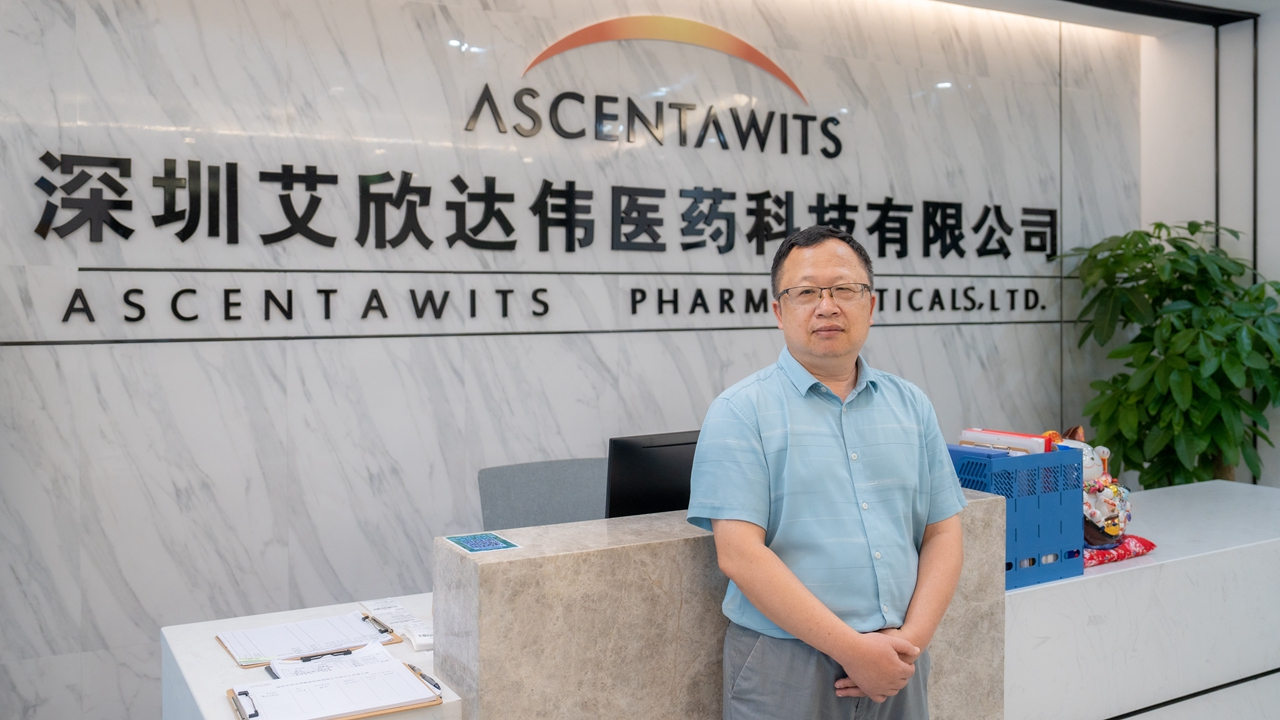
Dr. Duan Jianxin, chairman and general manager of Ascentawits Pharmaceuticals Ltd.
Being an innovator
Ascentawits, located inside the Shenzhen Biomedicine Innovations Industrial Park in Pingshan, is engaged in the research and development (R&D) of small-molecule drug conjugates (SMDCs), a promising approach for targeted cancer therapies. SMDCs are highly effective for tumor cell penetration and can enhance the therapeutic potential of anticancer drugs.
“Chemotherapy drugs affect both cancerous and healthy cells. What scientists are diligently striving after in cancer therapies is something like a ‘magic bullet,’ which is designed to specifically target cancer cells, minimizing damage to normal cells and reducing side effects,” Duan said.
“Ascentawits is seeking not only one ‘magic bullet,’ but a series of them. Since the company’s inception, we have been working on producing first-in-class drugs. We hope to utilize our expertise making achievements in the segmented field of SMDCs,” he added.

Researchers discuss at Ascentawits' R&D center in Pingshan.
Duan introduced that one of his company’s first-in-class drugs for recurrent and refractory liver cancer has entered Phase 2 clinical trials in China and the U.S. Later, it will carry out research on pancreatic and intrahepatic bile duct cancer with oncogenic mutation in the KRAS gene.
“A patient in our trial has been receiving a 27-week treatment of the drug. Now, his cancerous liver tissue has shrunk by 62% and his tumor markers have dropped from 1,200 to normal. If this drug succeeds, it will be the first small-molecule drug for targeted liver cancer therapies,” Duan said.
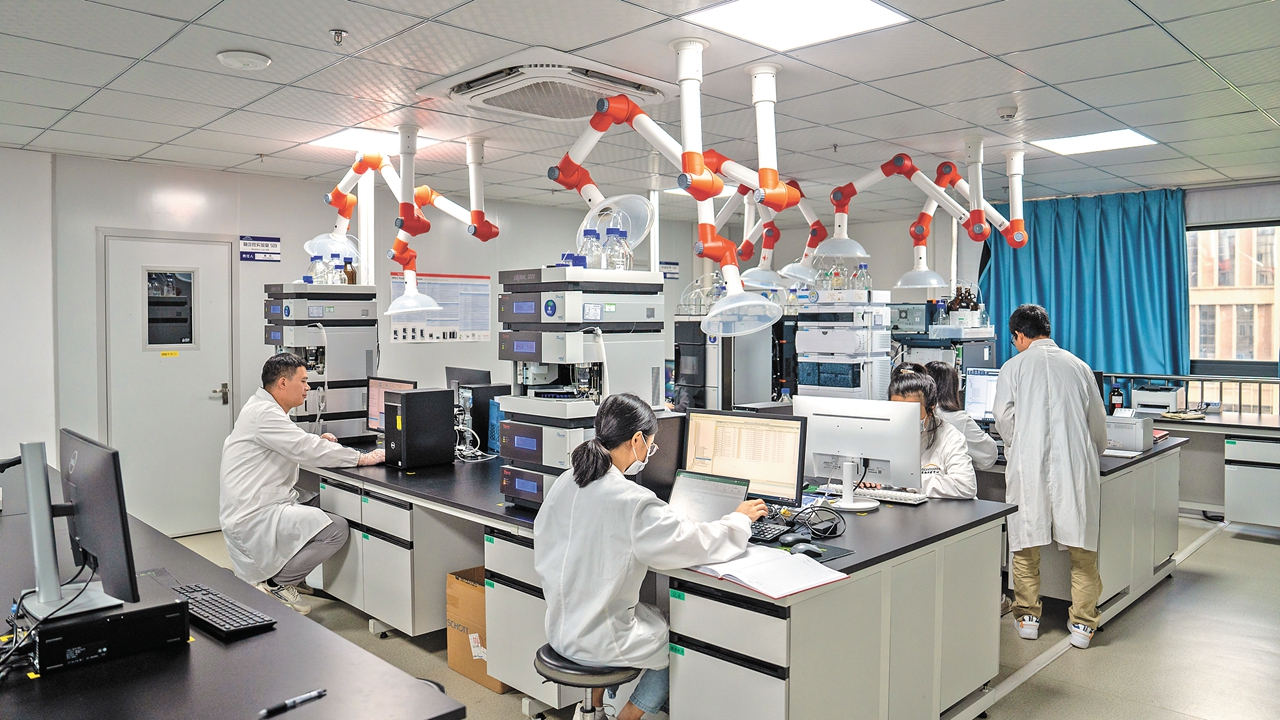
Researchers work at Ascentawits' R&D center in Pingshan.
Duan believes that innovation is the key to sustainable development. Ascentawits now has a 1,400-square-meter R&D center in Pingshan with over 30 professionals engaged in synthesis, testing and production for first-in-class drugs.
The center has carried out cooperation with prestigious institutes, such University of Oxford, University of Cologne, Southern University of Science and Technology, Shenzhen Bay Laboratory, Shenzhen University and Shenzhen Polytechnic University. Ascentawits also has R&D centers in Beijing and the San Francisco Bay Area in the U.S.
Since its founding in 2017, Ascentawits has applied for more than 200 patents globally and been granted over 50 patents as of June 31, according to Duan. Last year, Shenzhen recognized the company for using special and sophisticated technologies to produce novel and unique products.
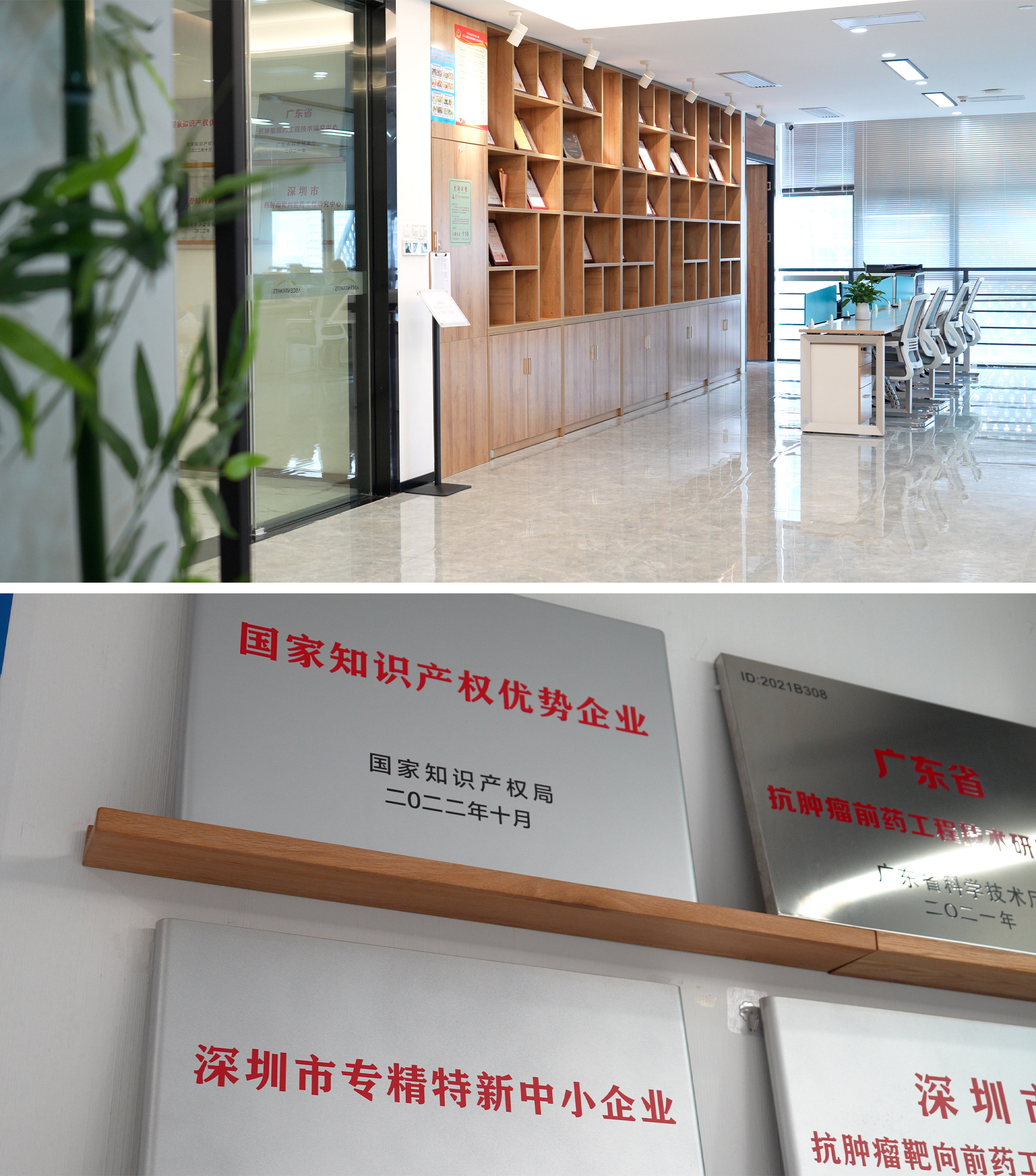
Patents and recognitions of Ascentawits are on display at the company's office in Pingshan.
Substantial support
With a Ph.D. in chemistry from the University of Florida, Duan has worked as fellow at Threshold Pharmaceuticals Inc. in the U.S. and has led three research projects to clinical trials.
"When I was studying abroad, I learned the latest technologies, such as targeted drug delivery systems. With my team’s 20-year experience, we progressively have our own solutions in medicine,” Duan noted. “Meanwhile, in 2015, the National Medical Products Administration implemented a major reform in the medicine approval system, bringing a new era for biomedicine in China. Many people like me hoped to return to China to make a difference.”
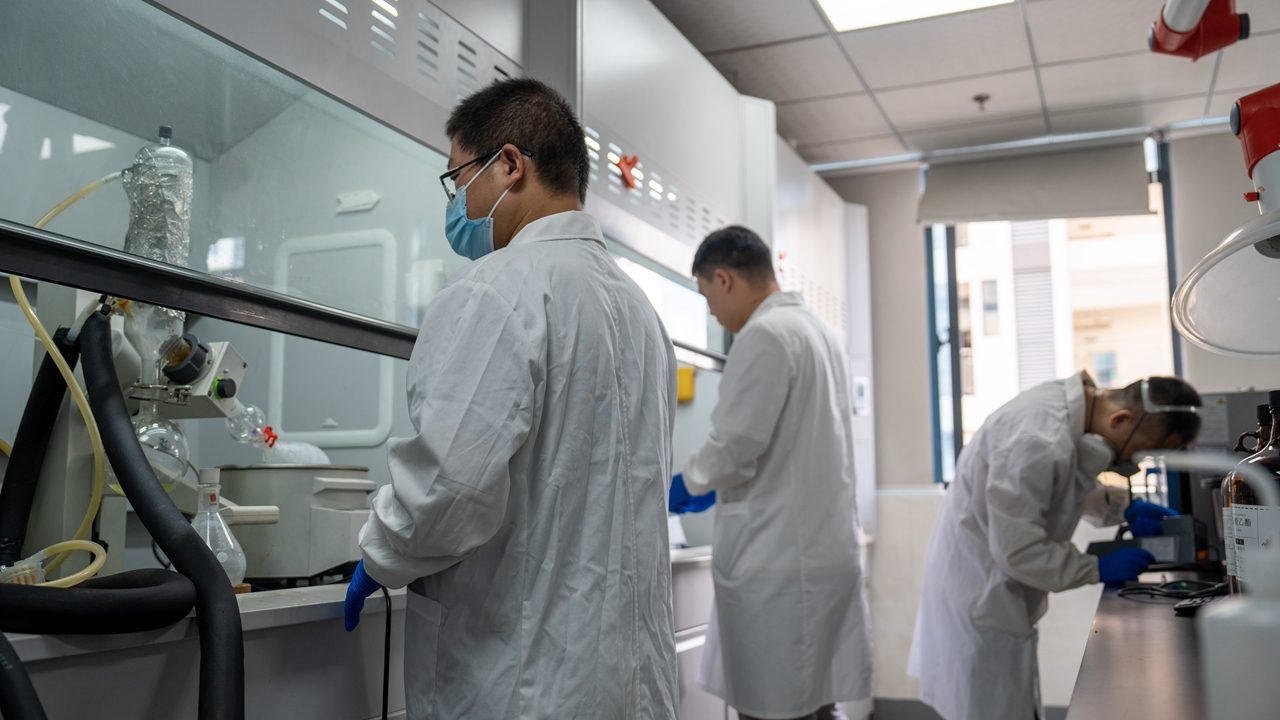
Researchers work at Ascentawits' R&D center in Pingshan.
Duan recalled that when he founded his company in 2017 in Pingshan, the surrounding areas of Shenzhen Biomedicine Innovations Industrial Park were very desolate. "You could choose any piece of land here,” he said.
“Now after six years of development, the industrial cluster has been formed, and the biomedicine industry in Pingshan has started to show certain strengths, especially small-molecule drugs. There's a complete industrial chain in Pingshan, which offers a huge talent pool in biomedicine. Every enterprise here can find talents, so we hope to develop first-in-class drugs here and establish a global presence.”
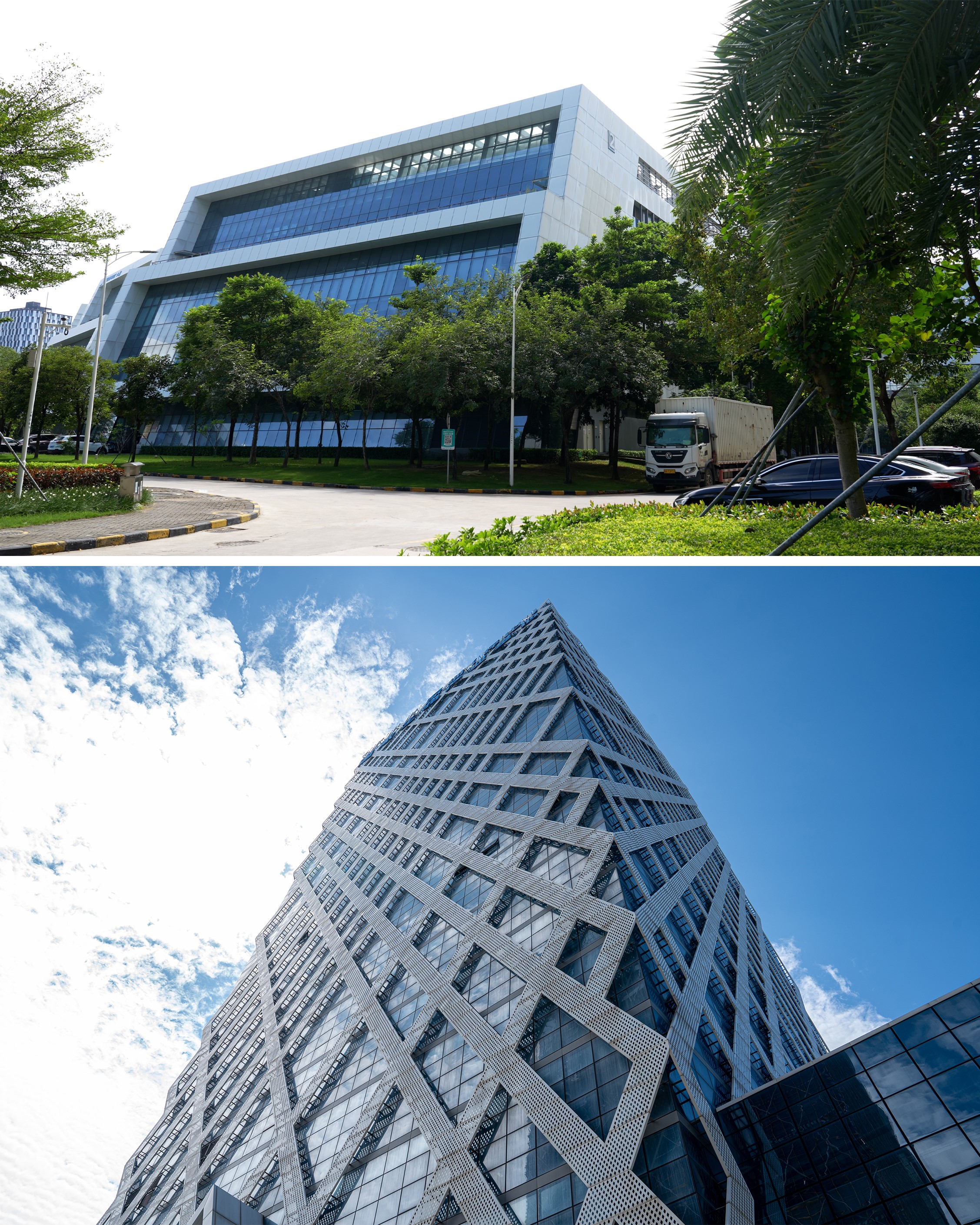
Buildings are seen at Shenzhen Biomedicine Innovations Industrial Park in Pingshan.
This year, Ascentawits has obtained an additional 8,000-square-meter site in the biomedicine park. “This is a great support from the Pingshan District Government. As our drugs have shown certain efficacy in clinical trials, we hope to build our own factory here and then form a complete chain for R&D, production and sales within our company.”
Duan introduced that last year, Ascentawits was granted a reward of 22.33 million yuan from the city government for clinical R&D and received a subsidy of nearly 50 million yuan for new drug R&D.
“Knowing the challenging conditions for investment and financing in biomedicine, Shenzhen's Development and Reform Commission and the Pingshan District Government are actively seeking ways to solve funding issues. Shenzhen's support for the biomedicine industry is substantial,” he said.
Building a national brand
Biomedicine is one of Shenzhen's 20 strategic emerging industry clusters and eight future industries ("20+8"); it is also one of the three leading industries in Pingshan.
"In the past, many pharmaceutical companies produced generic drugs, doing me-too or me-better drugs, and now we are developing first-in-class drugs. Shenzhen is supporting a group of companies developing first-in-class drugs through the ‘20+8’ industrial policies, and perhaps we can forge an entirely innovative path in biomedicine,” Duan said.
He acknowledged that Shenzhen has already made significant efforts in biotechnology development. He then compares the medicine industry to a growing bamboo: "In the early years, the roots grow downwards and absorb nutrients, and then the bamboo grows upwards very fast. Biomedicine cultivation is a long process, and it may take 10 years to possibly develop a new drug."
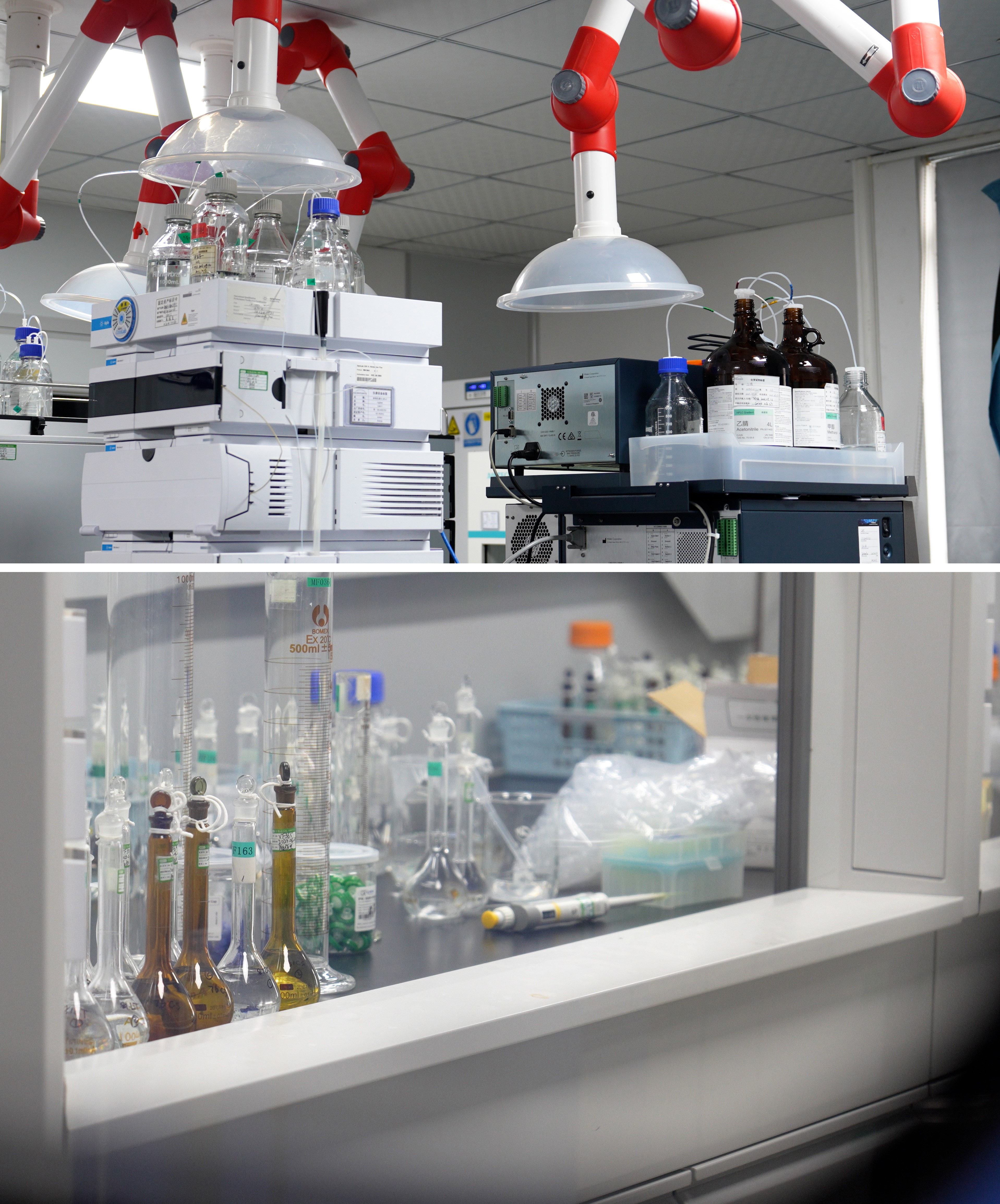
Lab equipment and supplies are seen at Ascentawits’R&D center in Pingshan.
“BYD has established itself as a national brand, thanks to the consistent support from Shenzhen, and I hope Shenzhen's biotechnology industry can also establish our own national brands in the global market.”
As for Ascentawits’ future plans, Duan is confident that since their drugs have shown certain efficacy in clinical trials, he is considering licensing out to overseas markets and exploring collaborations with domestic pharmaceutical companies.